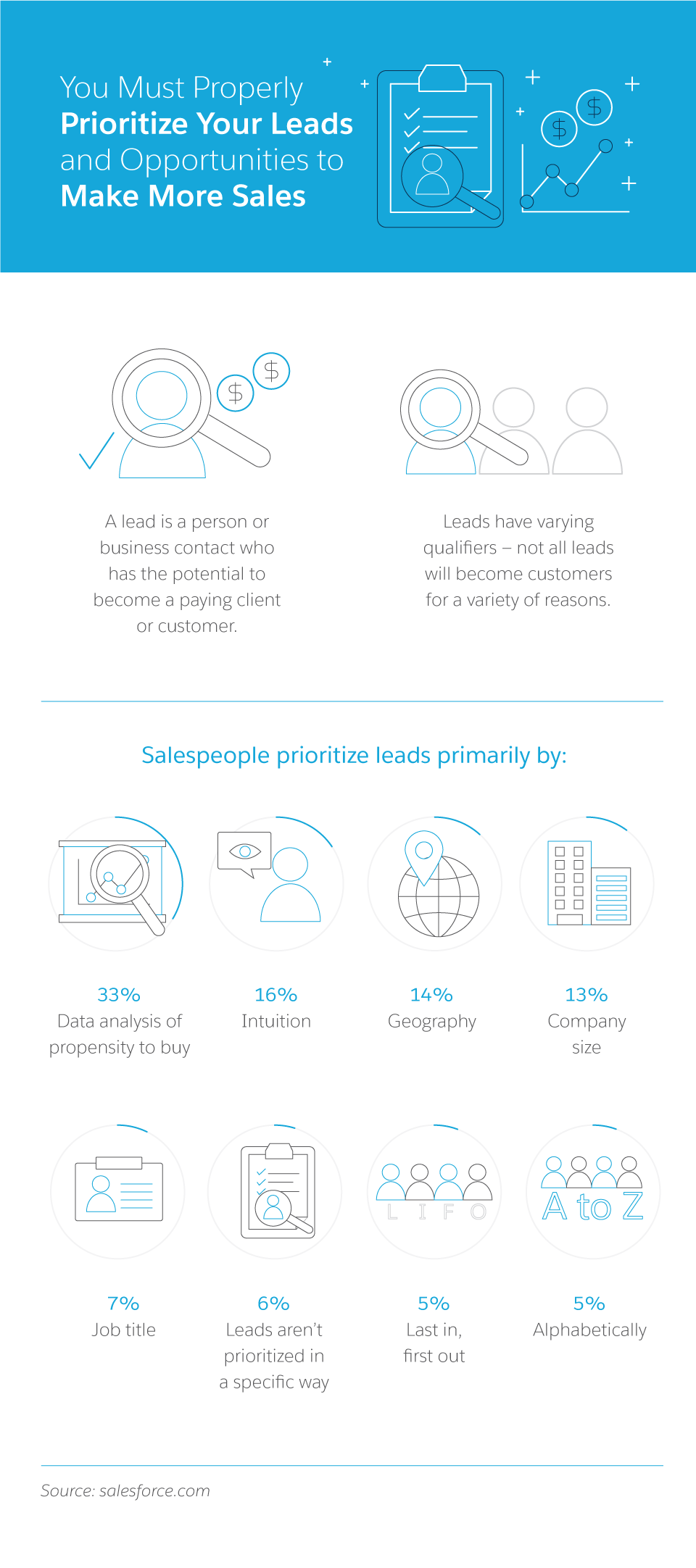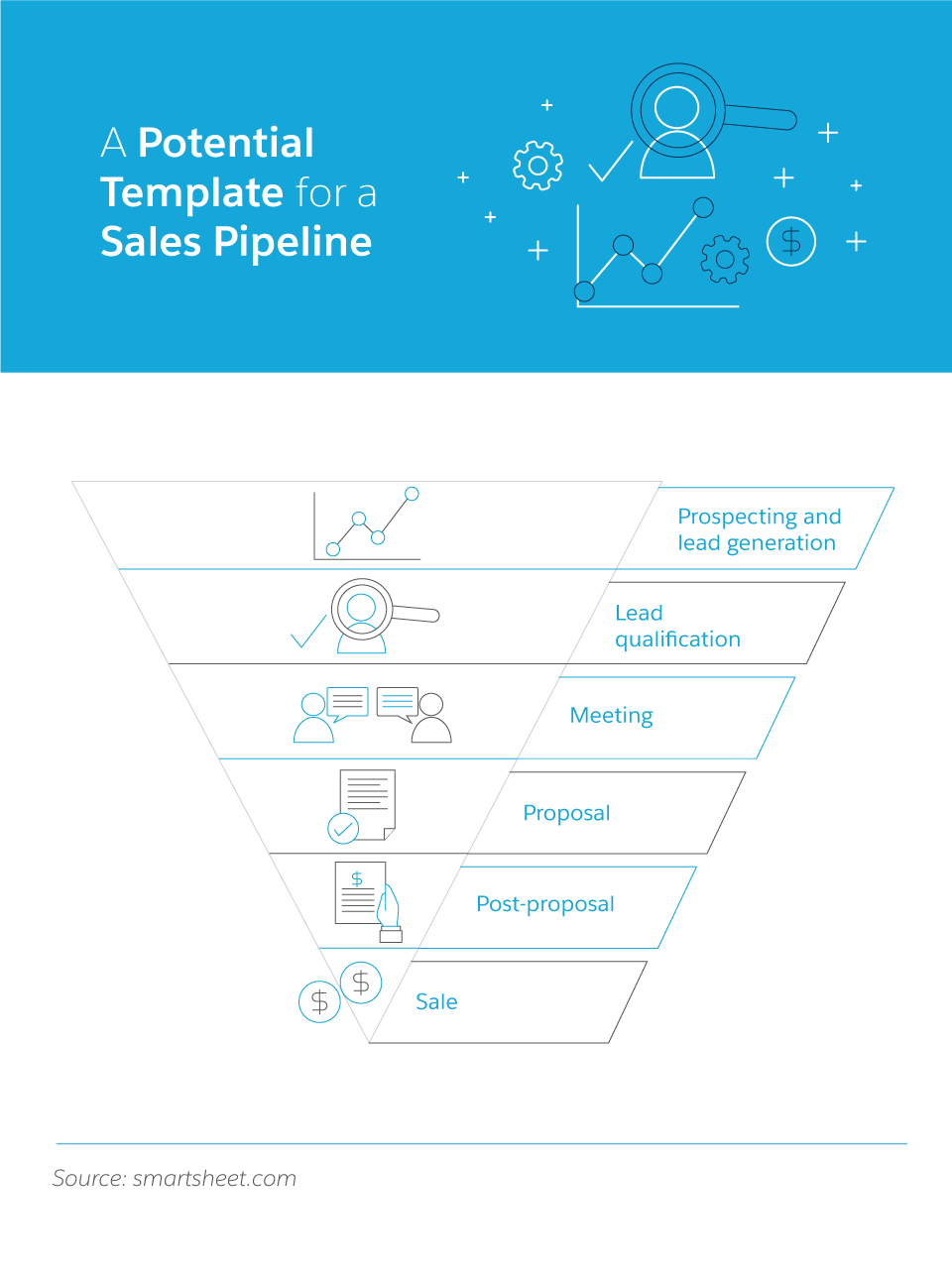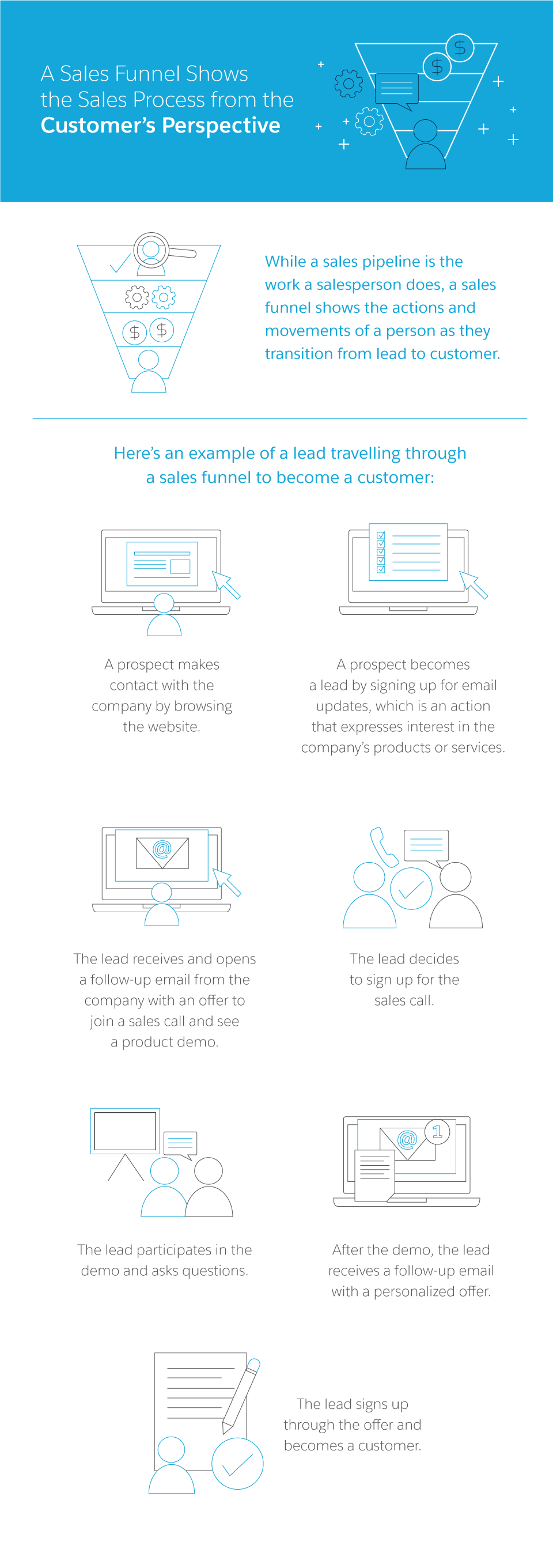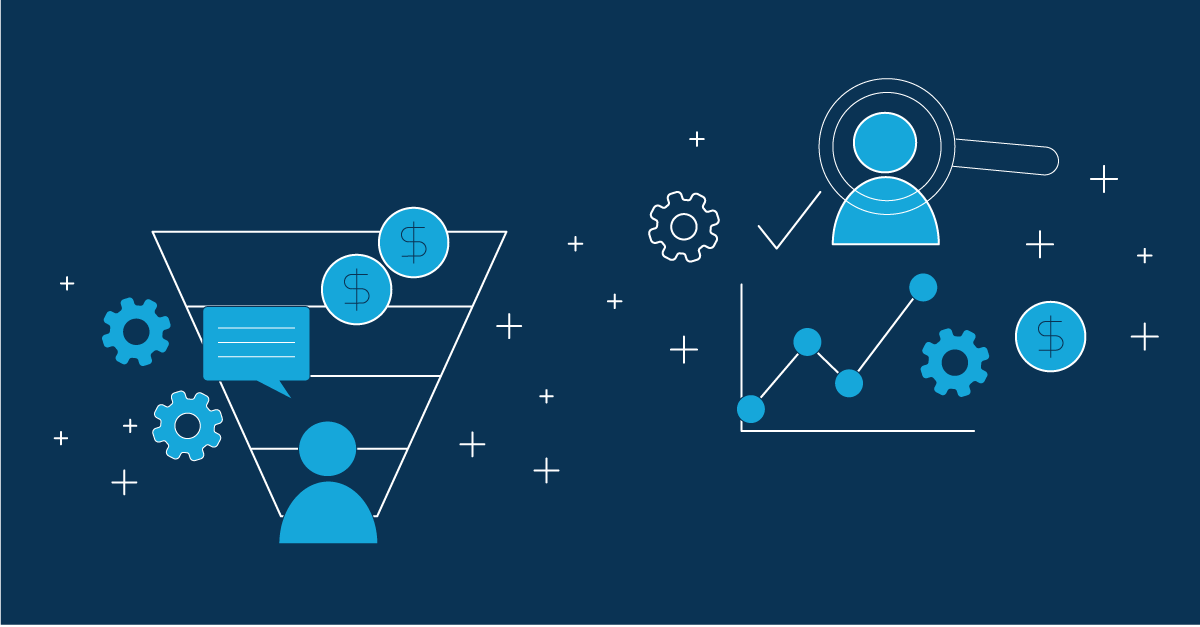If you’ve spent even a few minutes dabbling in the world of sales, then you’ve probably come across some or all of the following terms: leads, pipelines, and funnels.
Even though these terms don’t actually refer to, say, laying down a gas pipeline or baking a cake, they can seem just as complicated — if not more so.
Nevertheless, developing a concrete grasp of these concepts is essential if you want to up your sales game. Per the Harvard Business Review, companies with a formal sales pipeline enjoy significantly higher growth rates and revenue than companies that fail to effectively manage this process.
Ready to master some foundational info about leads, pipelines, and funnels? Let’s dive in.
What Are Leads in Sales?
Put simply, a lead is a person or business contact who has the potential to become a paying client or customer.
A prospective lead is identified when they either connect with your company (for example, by signing up for an initial sales call) or a salesperson from your company identifies a person or business as a possible lead.
After a prospective lead is identified, a salesperson will then qualify them. This means they will determine whether the person or business seems like a possible client or customer based on whether their interests, needs, pain points, and financial standing match the services or products offered by the company in question.
If a person or business passes through this qualifying stage, then they officially become a lead and continue on in the sales process.

What Is a Sales Pipeline?
Your sales pipeline represents every stage of your sales process and lets you categorize where your prospects are in the process at any given time.
This information can help you estimate how many sales you may close over a given time period, as well as how much revenue your business is generating and when. It also makes it easier to identify where to invest salespeople’s time and energy.
The more prospects there are in your sales pipeline, the more likely you are to keep growing your revenue. That said, every prospect moves through the pipeline at their own pace, depending on how interested they are in your products or services, whether a salesperson has created a sense of urgency, and other personalized factors.
Even though sales pipelines can be useful tools for predicting conversions and revenue, a pipeline is not the same as a sales forecast. A pipeline represents every stage of the sales process and can be used to track where prospects are in the process and what steps a salesperson has taken. In contrast, a forecast focuses on the likely number of conversions in a particular period of time.
A sales pipeline should also not be confused with a sales funnel, which we’ll define in the next section.
While there are plenty of sales pipeline tools and templates available, each company’s pipeline will look a bit different. That said, a general model for a sales pipeline might look something like:
Prospecting and lead generation, in which a salesperson identifies possible customers or potential customers make contact with a salesperson
Qualification, in which a salesperson determines whether a given prospect is a good fit for a sales investment
Meeting, in which a salesperson and lead chat about a possible relationship
Proposal, in which the salesperson shares a proposal or offer for the lead to review
Post-proposal, in which the salesperson follows up on their proposal
Sale, in which the salesperson closes the deal and contracts are signed
This is a very simplified sales pipeline, and it’s quite possible that yours will involve many more steps. The point is that the sales pipeline is meant to reflect every step salespeople take in order to move leads through the sales process and toward a conversion, as well as where leads are in the sales process at any given time.

What Is a Sales Funnel?
While a sales pipeline focuses on the stages of the sales process from the point of view of a salesperson, sales funnels focus on the path that prospects and buyers take through the sales process.
The word funnel serves as an apt visual representation: There will be more prospects at the top of the sales funnel than there will be potential customers at the bottom. The funnel shrinks as prospects and leads move through and are naturally filtered out by the sales process.
Sometimes sales funnel stages are defined by the acronym AIDA.
Awareness: A potential customer becomes aware of your company thanks to a social media post, Google search, and so on. You’ll sometimes hear this stage referred to as TOFU, or top of the funnel.
Interest: Potential customers start to consider your product or service, which is sometimes referred to as MOFU, or middle of the funnel.
Decision: This is when potential customers become hot leads. They feel ready to make a purchasing decision. Businesspeople often refer to this as the BOFU, or bottom of the funnel.
Action: The lead becomes a customer by purchasing the product or service in question.
As with sales pipelines, sales funnels can vary from company to company. That said, here’s an example of a very basic sales funnel.
A prospect makes contact with the company, possibly by browsing the website.
A prospect becomes a lead by taking an action that expresses interest in the company’s products or services. For example, they sign up for email updates or download a free white paper.
The lead receives a follow-up email from the company with an offer to join a sales call.
The lead decides to sign up for the sales call.
The lead participates in the sales call.
The lead receives a follow-up email after the sales call with a personalized offer.
The lead signs up through the offer and becomes a customer.
Of course, it’s often a lot more complicated than this. For instance, many companies segment their sales funnels so the process looks different for different categories of potential customers. And companies may use different sales funnel metrics to inform the evolution of their funnels.
No matter the exact actions in a given sales funnel, having a clear understanding of that funnel is important. It helps you understand your potential customers, identify places where customers might slip through the cracks, and determine where and when to invest additional marketing and sales resources.

How Do Leads, Pipelines, and Funnels Intersect?
As you can see, there’s a lot of overlap between different sales terms: leads, pipelines, forecasts, funnels, and more. This helps explain why these can be challenging concepts to grasp for people who are just starting their sales careers — or for C-suite executives who aren’t familiar with the sales process.
Even though each of these terms refers to a distinct facet of the sales process, there’s still a lot of intersection between them.
For example, salespeople use their sales pipeline to keep track of where leads are in the sales process. At the same time, leads are travelling through the sales funnel. And in many ways, the sales pipeline and sales funnel mirror each other. They reflect a similar process, but from two different perspectives: the salesperson’s and the lead’s.
In fact, it’s likely impossible to grow an effective sales pipeline or a sales funnel without an understanding of the other.
If you map out a buyer’s journey but fail to consider all the touchpoints required by a salesperson along the way, then your funnel is unlikely to yield the kind of results you want. Similarly, if you build a sales pipeline without regard to the buyer’s journey, then you’re unlikely to develop the customer understanding necessary to successfully close sales.
Bottom line? It is only by coming to understand all three — leads, pipelines, and funnels — that salespeople can operate to their fullest potential.
Why Top Salespeople Prioritize Leads, Pipelines, and Funnels
Once you understand how these concepts intersect, then you successfully prioritize all three.
Without an appreciation for everything that it takes to convert prospective leads into qualified leads, and leads into customers, then a salesperson is unlikely to achieve high conversions.
Here are four strategies that top salespeople may use in order to stay on top of every aspect of the sales process.
Regular monitoring. Taking the time to review both your sales pipeline and sales funnel on a regular basis helps you identify, for example, where customers are most likely to convert, where customers are falling through gaps, and opportunities for greater engagement.
Acting on data. It’s one thing to review data; it’s quite another to actually change up your sales strategies based on that analysis. The most effective salespeople regularly tweak their processes based on the data they’ve gleaned from regular reviews of their pipelines and funnels.
Collaboration with other departments. Many team members from a given company have a role to play in the sales process — not just salespeople. Thus, the best salespeople make sure they’re collaborating with team members from marketing, customer service, finance, and other departments to better understand all of the facets involved in sales and to maximize the sales process.
Continual education. The world of sales pipelines and funnels is continually evolving. Tactics that worked a year or even a few months ago may no longer be as effective as newer strategies, which is why it’s so important to stay on top of your education. A basic understanding of leads, sales pipelines, and sales funnels sets the foundation for effective sales, but continual learning ensures that you’re always employing best practices.
Share "Get Started in Sales: What are Leads, Pipelines, and Funnels?" On Your Site



